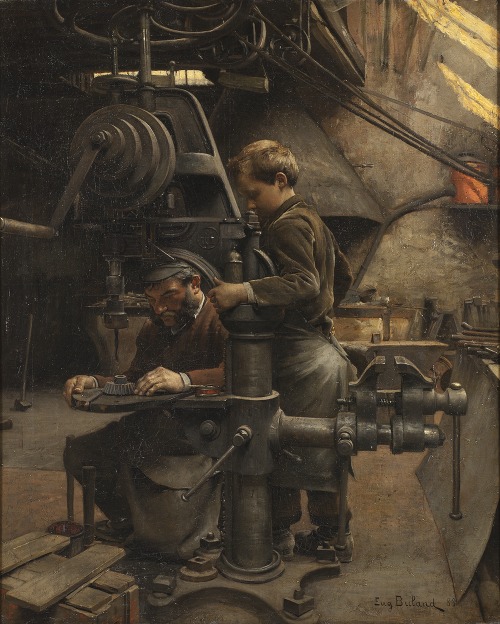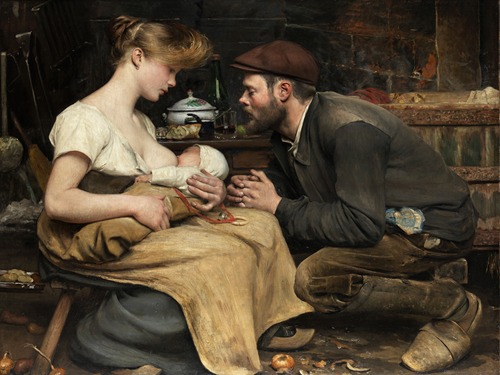


![Etude pour la gravure [La Terre]](https://mdl.artvee.com/ft/47817dr.jpg)


Jean-Eugène Buland was a French painter.
The son of an engraver, Buland entered the École nationale supérieure des Beaux-Arts under the tutelage of Alexandre Cabanel. His earliest works were Symbolist paintings of antique scenes, but he quickly turned towards depicting scenes of everyday life.
He used photographs in order to paint with realism. He received the Second Grand Prix de Rome two years in a row, in 1878 and 1879. His participation in the Salon led to several awards: an honorable mention in 1879, a third-place medal in 1884, followed by a second-place medal in 1887. At the World's Fair in Paris in 1889 he was honoured with a silver medal. He was inducted into the Legion of Honour in 1894.
He profited from the commissions he received from major institutions such as the Musée du Luxembourg, and other museums in the provinces. He painted several panels of the Salon of Sciences at the Hôtel de Ville, Paris and decorated the ceiling of the city hall at Château-Thierry.
The Museum of Fine Arts of Carcassonne, which held his work Mariage Innocent (Innocent Marriage), devoted a retrospective to him from October 19, 2007, to January 19, 2008, publishing a catalogue for the occasion.
He was the brother of Jean-Émile Buland (1857–1938), an engraver and winner of the 1880 Prix de Rome.



![Etude pour la gravure [La Terre]](https://mdl.artvee.com/ft/47817dr.jpg)